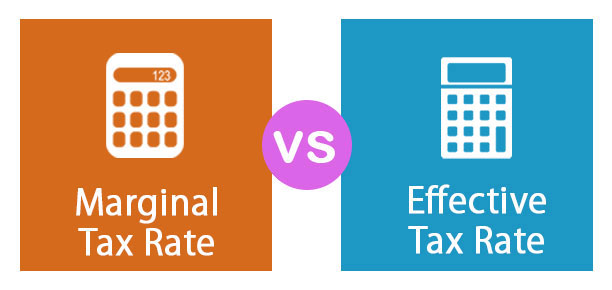In a system where tax obligations are distributed proportionally among residents according to their average revenue, the marginal income tax rate is the most significant rate of taxable income a person pays. The United States employs a marginal tax bracket system to determine the proportion of taxable income owed for different income levels. Such a policy aims to guarantee that those with lower incomes pay a smaller share of their income in taxes than those with higher incomes.
Tax Rate Margin: What You Need to Know
Individuals who pay taxes are often categorized into tax bands or groups underneath a marginal tax rate, with the rate imposed on the tax-paying citizens based on taxable income where the taxpayer falls within the category or range. Every additional income is taxed more than just the last dollar.
Simply stated, a person's entire income is assessed as follows:
The first dollar received will be charged at the percentage for the small tax bracket. However, the last dollar attained will be taxed at the highest tax bracket rate for the overall revenue, which applies to the price bracket within which it lies.
Altering marginal tax rates is possible through legislative action. As of January 1, 2018, the overall marginal tax rates in the USA are what they are now due to the passing of TCJA. Tax rates varied from 10% to 39.6% over seven different brackets under the previous legislation. The new law that was passed in December 2017 preserves the seven-tiered system. However, changes were made to the revenue and tax brackets. The tax brackets now go from 10% to 37%, as mandated by the Tax Cuts and Jobs Act (TCJA).
How Do You Calculate the Effective Tax Rate?

The percentage of a person's or company's income that goes toward paying taxes is known as the ETR. Consumers' effective tax rates reflect the weighted average of the rates at which they will be taxed on both produced and inherited sources of earnings. Legal taxation is the lawful percentage imposed by law, whereas the ETR is the influential figure at which a company's pre-tax profits are taxed.
What's the Distinction Between the Marginal Tax Rate and the ETR?

The ETR of an individual is a better indicator of their actual tax burden rather than their marginal income tax rate. We must realize that the MTR is the rate at which an individual or family enters a tax bracket for the first time, while the ETR is the rate at which they remain throughout that bracket.
The United States has a proportional system of income taxes in which tax rates increase above and beyond predetermined income limits. Despite having the same amount of money earned in the highest marginal band, two people or companies could wind up with significantly different effective taxes.
Flat Tax: What Is It?
Every tax paying individual is subjected to the same percentage of taxation under the system known as a "flat tax," which is sometimes referred to as a "regressive tax." In the case of a flat tax, every taxpayer is subject to the same tax rate, and neither exclusions nor allowances are permitted.
However, discussions are currently taking place over the possibility of permitting specific deductions. Most plans or systems that employ a flat tax will not collect taxes generated through earnings, payments, capital appreciation, or other assets.
Marginal vs. Flat Tax
Some states have adopted a flat tax for their income taxes. As opposed to the graduated marginal tax rate, this method applies a uniform rate of taxes to all income levels. That is to say. There is no distinction between the rich and the poor; everyone pays the same rate.
The vast majority of tax systems that employ a flat rate of taxation do not provide for exemptions. You can typically find these systems in nations with an expanding economy. Those who favor this kind of taxation argue that it is just since it levies taxes at the same level for individuals and organizations. Those opposed to it believe it will result in tax-paying individuals with higher incomes paying less now than they ought to for an equal society.
Marginal Tax Rates: How to Find Them Out?
When determining the rate of taxation at the marginal level, the tax bracket with the lowest amount of taxable income is subject to the lowest rate. The amount of taxable income left overfills the next tier and is subject to the tax rate that applies to that bracket, and so on, until it reaches the highest possible rate.
Many people worry about the increase in their tax bill that occurs when their income pushes them into a higher tax band. Many wrongly believe that the increased tax rate would result in significant financial burdens for those affected. Only the amount of income beyond the threshold into the next tax category is subject to taxation.
Illustration of the Marginal Tax Rate
Let's take this as an instance; Peter has a total tax liability of $65,000. The following is a calculation of how much John's yearly tax would be if he were paying taxes for a single family.
Peter's tax liability is somewhere around $65,000 places him in the tax band with an $85,500 income and an income tax of 20%, based on the taxation regulations stated by the government. This implies he will owe a total of $9,000 in taxes.
In another instance, Tina is considering a venture that might boost her taxable income by $163,000, putting him in the next tax bracket at the 25% marginal tax rate. She expects a rise in his taxable income to $40,750 this year from $65,000.
Tina's tax due rises to $5,500 (55.5%) from $9,000 as a result of a $24,000 increase in her tax liability. On the other hand, she will receive a net income gain of $19,000.









